|
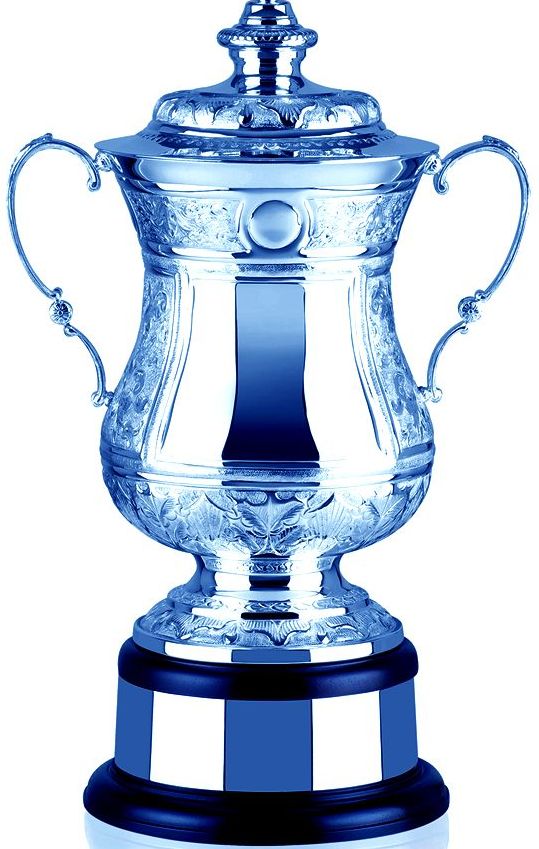
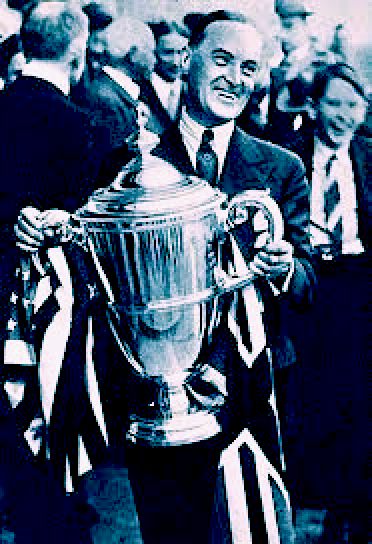
Examples
of friendly cups, on the right Malcolm Campbell holding a sizeable prize
trophy. In the world of trophies size matters. A
trophy such as the Bluebird™ World Cup is a unique work of art that
represents the aspirations of millions of environmentalists, and the
dedication of thousands of competitors that will enter this prestigious world
series in the years to come.
On
this page you will see the Bluebird World Cup being sculpted in the months
to come ............... ............................
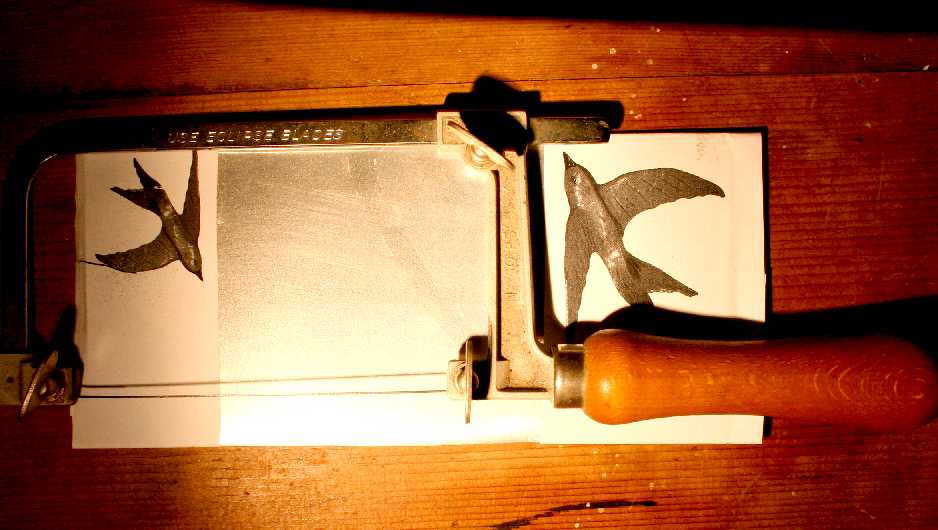 As
with the World Cup Trophy, the artist will develop his ideas and form them
into a cup using traditional skills for working in metals.

Every
entrant completing one of the recognized prestigious international
series of courses, will qualify for a Blue
Riband (a blue ribbon made of silk with a medal pendant) a mark of
distinction and meritorious endeavor, which they might proudly display
with any competing vehicle, team, corporate or other event, etc. BMS has
commissioned an artist to design the ribbon and medalion. There is
another Blue Ribband, which is a 4
foot high trophy that is awarded to the fastest passenger ship to cross
the Atlantic Ocean.

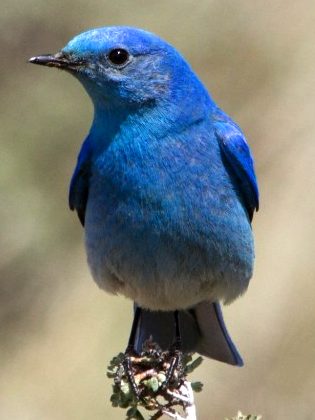

The
North American Blue Bird is a fine example of nature adapting life to suit
its environment. The cousins of this fabulous creature have inspired
branding across the globe, from toffee to software - including the vehicle
motifs on this page. ENAMEL Vitreous enamel, also porcelain enamel in US English, is a material made by fusing powdered glass to a substrate by firing, usually between 750 and 850 °C (1,380 and 1,560 °F). The powder melts, flows, and then hardens to a smooth, durable vitreous coating on metal, or on glass or ceramics. The term "enamel" is most often restricted to work on metal, which is the subject of this article. Enameled glass is also called "painted". Fired enamelware is an integrated layered composite of glass and metal. The word enamel comes from the Old High German word smelzan (to smelt) via the Old French
esmail. Used as a noun, "an enamel" is a usually small decorative object, coated with enamel coating. Enameling is an old and widely adopted technology, for most of its history mainly used in jewelry and decorative art. Since the 19th century the term applies also to industrial materials and many metal consumer objects, such as some cooking vessels, dishwashers, laundry machines, sinks, and tubs.
("Enamelled" and "enamelling" are the preferred spellings in British English, while "enameled" and "enameling" are preferred in American English.)
Vitreous enamel can be applied to most metals. Most modern industrial enamel is applied to steel in which the carbon content is controlled to prevent unwanted reactions at the firing temperatures. Enamel can also be applied to copper, aluminium, stainless steel, cast iron or hot rolled
steel, as well as to gold and silver.
Vitreous enamel has many excellent properties: it is smooth, hard, chemically resistant, durable, scratch resistant (5-6 on the Mohs scale), has long-lasting color fastness, is easy to clean, and cannot burn. Enamel is glass, not paint, so it does not fade under ultraviolet light. A disadvantage of enamel is a tendency to crack or shatter when the substrate is stressed or bent, but modern enamels are relatively chip- and impact-resistant because of good thickness control and thermal expansions well-matched to the metal. The Buick automobile company was founded by David Dunbar Buick with wealth earned by his development of improved enameling processes, circa 1887, for sheet steel and cast iron. Such enameled ferrous material had, and still has, many applications: early 20th century and some modern advertising signs, interior oven walls, cooking pots, housing and interior walls of major kitchen appliances, housing and drums of clothes washers and dryers, sinks and tubs cast iron bathtubs, farm storage silos, and processing equipment such as chemical reactors and pharmaceutical process tanks. Structures such as filling stations, bus stations and Lustron Houses had walls, ceilings and structural elements made of enameled steel. One of the most widespread modern uses of enamel is in the production of quality chalk-boards and marker-boards (typically called 'blackboards' or 'whiteboards') where the resistance of enamel to wear and chemicals ensures that 'ghosting', or unerasable marks, do not occur, as happens with polymer boards. Since standard enameling steel is magnetically attractive, it may also be used for magnet boards. Some new developments in the last ten years include enamel/non-stick hybrid coatings, sol-gel functional top-coats for enamels, enamels with a metallic appearance, and new easy-to-clean enamels.

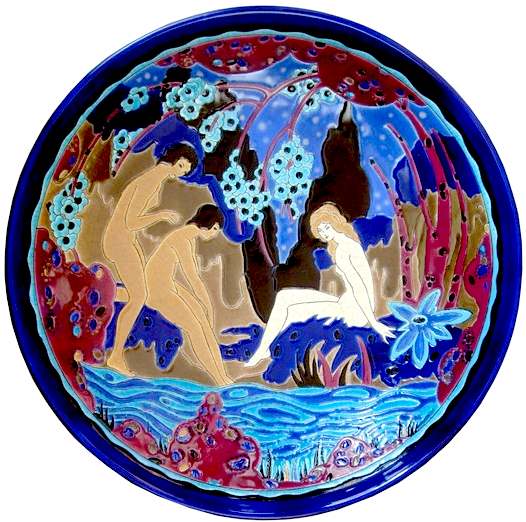
The key ingredient of vitreous enamel is a highly friable form of glass called frit. Frit is typically an alkali borosilicate chemical with a thermal expansion and glass temperature suitable for coating steel. Raw materials are smelted together between 2,100 and 2,650 °F (1,150 and 1,450 °C) into a liquid glass that is directed out of the furnace and thermal shocked with either water or steel rollers into frit.
Color in enamel is obtained by the addition of various minerals, often metal oxides cobalt, praseodymium, iron, or neodymium. The latter creates delicate shades ranging from pure violet through wine-red and warm gray. Enamel can be transparent, opaque or opalescent (translucent), which is a variety that gains a milky opacity with longer firing. Different enamel colors cannot be mixed to make a new color, in the manner of paint. This produces tiny specks of both colors, although the eye can be tricked by grinding colors together to an extremely fine, flour-like powder.
There are three main types of frit, usually applied in sequence. A ground coat is applied first; it usually contains smelted-in transition metal oxides such as cobalt, nickel, copper, manganese, and iron that facilitate adhesion to steel. Next, clear and semi-opaque frits that contain material for producing colors are applied. Finally, a titanium white cover coat frit, supersaturated with titanium dioxide, creating a bright white color during firing, is applied as the exterior coat.
After smelting, the frit needs to be processed into one of the three main forms of enamel coating material. First, wet process enamel slip (or slurry) is a high solids loading product achieved by grinding the frit with clay and other viscosity-controlling electrolytes. Second, ready-to-use
(RTU) is a cake-mix form of the wet process slurry that is ground dry and can be reconstituted by mixing with water at high shear. Finally, electrostatic powder that can be applied as a powder coating is produced by milling frit with a trace level of proprietary additives. The frit may also be ground as a powder or into a paste for jewelry or silk-screening applications. HERALDRY Heraldry is the profession, study, or art of creating, granting, and blazoning arms and ruling on questions of rank or protocol, as exercised by an officer of arms. Heraldry comes from Anglo-Norman herald, from the Germanic compound harja-waldaz, "army commander". The word, in its most general sense, encompasses all matters relating to the duties and responsibilities of officers of arms. To most, though, heraldry is the practice of designing, displaying, describing, and recording coats of arms and heraldic badges.
Historically, it has been variously described as "the shorthand of history" and "the floral border in the garden of history". The origins of heraldry lie in the need to distinguish participants in combat when their faces were hidden by iron and steel helmets. Eventually a formal system of rules developed into ever more complex forms of heraldry.
Though the practice of heraldry is nearly 900 years old, it is still very much in use. Many cities and towns in Europe and around the world still make use of arms. Personal heraldry, both legally protected and lawfully assumed, has continued to be used around the world. Heraldic societies exist to promote education and understanding about the subject.
LINKS
http://en.wikipedia.org/wiki/List_of_automobile_marques http://en.wikipedia.org/wiki/Brand http://www.youtube.com/watch?v=cn9RGvBp1sw http://en.wikipedia.org/wiki/Vitreous_enamel
|







